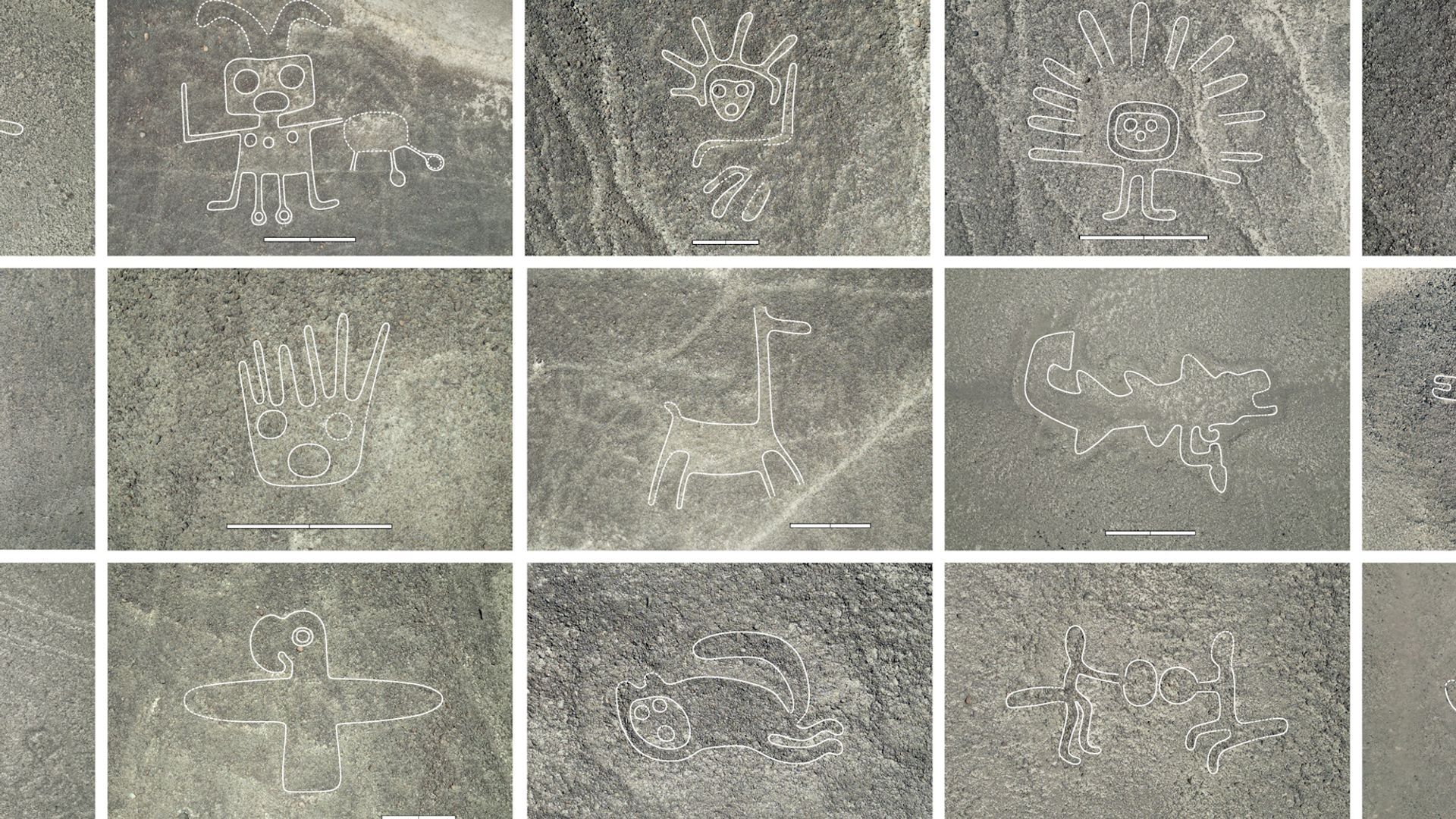apanese researchers have unveiled 303 new geoglyphs in Peru’s iconic Nazca desert. This remarkable find, powered by artificial intelligence (AI), has effectively doubled the number of known ancient etchings in the region, shedding new light on the mysterious pre-Inca civilization that created them over 2,000 years ago.
As I stand on the dusty plains of the Nazca desert, some 220 miles south of Lima, the enormity of this discovery becomes apparent. The famous Nazca lines, visible only from the air, have long captivated both scientists and tourists alike. Now, thanks to cutting-edge AI technology, we’re witnessing a new chapter in the study of these enigmatic figures.
Dr. Masato Sakai, the lead archaeologist from Yamagata University, explains the significance of using AI in this research. “The traditional method of visually identifying geoglyphs from high-resolution images was slow and risked overlooking some figures,” he says, gesturing towards the vast expanse of desert around us. “AI has allowed us to map the distribution of geoglyphs faster and more precisely than ever before.”
This innovative approach, a collaboration between Yamagata University’s Nazca Institute and IBM’s research division, has accelerated the pace of discovery dramatically. In just six months of fieldwork, the team uncovered 303 new geoglyphs – a feat that would have taken decades using conventional methods.
As we survey the newly discovered etchings from a small aircraft, the diversity of the geoglyphs becomes apparent. Dr. Sakai points out several giant linear-type figures, mainly representing wild animals. “These larger geoglyphs are easier to spot,” he explains, “but the AI has been particularly adept at identifying smaller relief-type geoglyphs that are much harder to see with the naked eye.”
Among these smaller figures are abstract humanoids and domesticated camelids, offering new insights into the lives and beliefs of the ancient Nazca people. The variety and complexity of these etchings continue to puzzle researchers, with theories ranging from astronomical significance to religious rituals.
The use of AI in this discovery marks a significant milestone in archaeological research. Published in the prestigious Proceedings of the National Academy of Sciences (PNAS) journal, the study demonstrates how AI can accelerate discoveries even in well-known archaeological sites.

Dr. Emily Rodriguez, an independent archaeologist not involved in the study, shares her excitement: “This is a game-changer for our field. It shows that even in areas we thought we knew well, there’s still so much to discover. AI is opening up new possibilities for archaeological research worldwide.
The AI model used in this study analyzed vast amounts of geospatial data produced by aircraft, identifying potential areas for new geoglyph discoveries. This approach not only saved time but also allowed researchers to focus their efforts more effectively during field surveys.
As the sun sets over the Nazca desert, casting long shadows across the ancient lines, the importance of this discovery in preserving world heritage becomes clear. The Nazca lines, designated a UNESCO World Heritage site, have faced threats from both natural erosion and human activity.
“These new findings underscore the need for continued protection and study of the Nazca region,” says Maria Sanchez, a local conservationist. “Each new geoglyph we discover helps us better understand and appreciate the incredible achievements of the Nazca civilization.”
The success of this AI-assisted research opens up exciting possibilities for future archaeological studies. Dr. Sakai and his team are already planning further investigations using this technology.
“We believe there are still more geoglyphs waiting to be discovered,” Dr. Sakai says with a smile. This is just the beginning of a new era in archaeological research, where technology and traditional fieldwork come together to unlock the secrets of the past.
As night falls over the Nazca desert, the ancient lines fade from view, but the excitement of discovery lingers in the air. With AI as a powerful new tool in their arsenal, archaeologists are poised to uncover even more wonders hidden beneath the sands of time.
















Add Comment